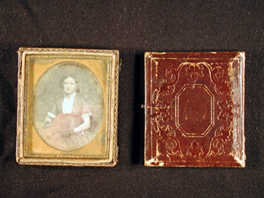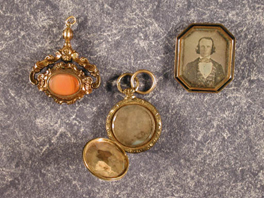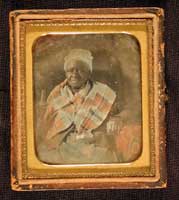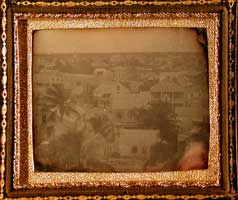Daguerreotype to Digital
A Brief History of the Photographic Process
Daguerreotype
Period of Use: 1839 - ca. 1860

The daguerreotype was the earliest practical photographic process, and was especially suited to portraiture.
It was made by exposing the image on a sensitized silver-plated sheet of copper, and as a result, the surface of a daguerreotype is highly reflective.
There is no negative used in this process, and the image is almost always reversed left to right. Sometimes a mirror inside the camera was used to correct this reversal.

Daguerreotypes were produced in a variety of sizes:
(The sixth plate is the most common)
Double Whole Plate - 8 1/2" x 13"
Whole Plate - 6 1/2" x 8 1/2"
Half Plate - 4 1/4" x 6 1/2"
Quarter Plate - 3 1/4" x 4 1/4"
Sixth Plate - 2 3/4" x 3 1/4"
Eighth Plate - 2 1/8" x 3 1/4"
Sixteenth Plate - 1 5/8" x 2 1/8"
Examples of Daguerreotypes:

 Listen: The Folk Program
Listen: The Folk Program

